Introduction
Table of contents
- Introduction
- 6-Step Link Building Checklist for Aggressive Link Building
- Introduction to Aggressive Link Building
- Objective of Link Building
- My Link Building Checklist
- Step 1: Check Domain Authority (DA) and Domain Rating (DR)
- Step 2: Check Organic Traffic
- Step 3: Check Competitiveness of Keywords and Traffic Cost
- Step 4: Check Whether They Are Ranking on the First Page for Most Keywords
- Step 5: Check Whether the Site is Listed in Google
- Step 6: Check the Site Itself
- Conclusion
- FAQ
6-Step Link Building Checklist for Aggressive Link Building
Introduction to Aggressive Link Building
Navigating the complex world of link building can be a daunting task, especially with so many conflicting pieces of advice and services available. After dedicating countless hours to researching and evaluating over 100 sites, I’ve developed a straightforward checklist. This guide is designed to save you from the guesswork and provide clear criteria for identifying top-performing sites for backlinks.
The steps outlined here can be used for aggressive link building.
By “aggressive,” we mean utilizing freelancers who might employ unconventional or controversial methods.
It’s crucial to review their proposals and sites carefully, vetting them thoroughly, and only approving those that meet your criteria.
Pre-approving sites before proceeding with link placements ensures that you’re making informed decisions.
Objective of Link Building
Understanding the goals of link building can help you see why these steps matter:
- Establish Authority in Google’s Eyes: Authority in Google’s eyes means higher rankings and better visibility in search results. For example, if you have a site on dog training, establishing authority means your content is more likely to appear when dog owners search for training tips, driving more relevant traffic to your site.
- Increase Traffic from Google: Quality backlinks lead to more organic traffic. If you provide valuable content on dog training, effective backlinks from reputable sources can help more people find your site when they search for related information online.
- Rank for Competitive Keywords: Ranking for competitive keywords, like “best dog training techniques,” can place your site in front of a larger audience. It means your site is seen as a credible source, which attracts more visitors interested in your content.
My Link Building Checklist
Here’s a detailed checklist for aggressive link building, ensuring you know exactly what to look for:
Step 1: Check Domain Authority (DA) and Domain Rating (DR)
To gauge the site’s potential authority, you should start by evaluating its Domain Authority (DA) and Domain Rating (DR). These metrics offer insights into the site’s overall strength and likelihood of ranking well in search results.
- Define DA and DR:
- Proxies for PageRank: DA and DR are rough proxies for Google’s PageRank, which influences search rankings. For a deeper understanding, visit SEMrush’s article.
- Limitations of DA/DR: These metrics can be manipulated and should not be the sole indicators of a site’s value. They offer a general idea but need to be used alongside other factors. For more information, see Backlinko’s guide.
To showcase the limitation, see our experience with dogsvets.com:
- High DA identified by Moz
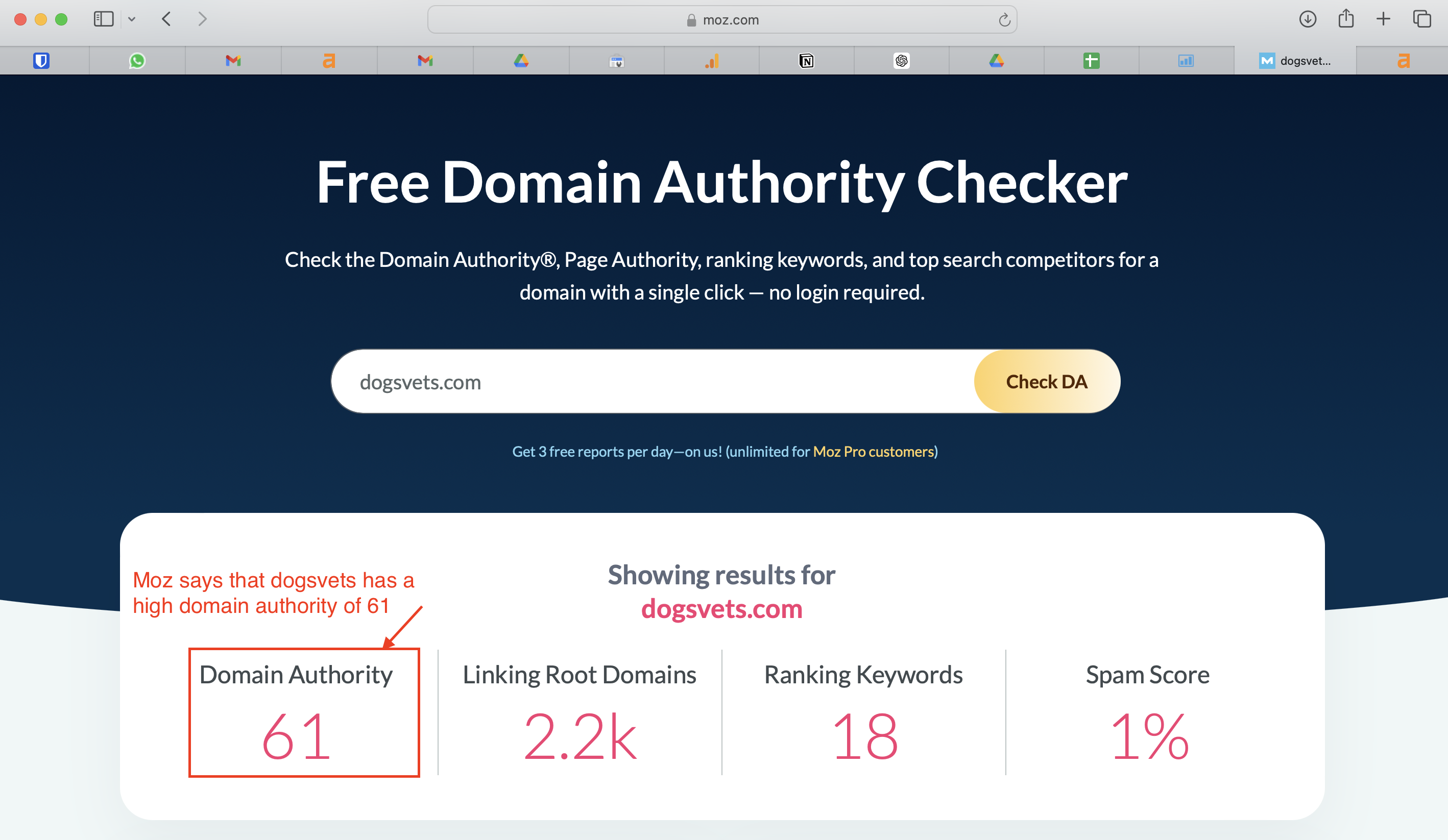
- But consistently declining organic traffic and poor traffic value
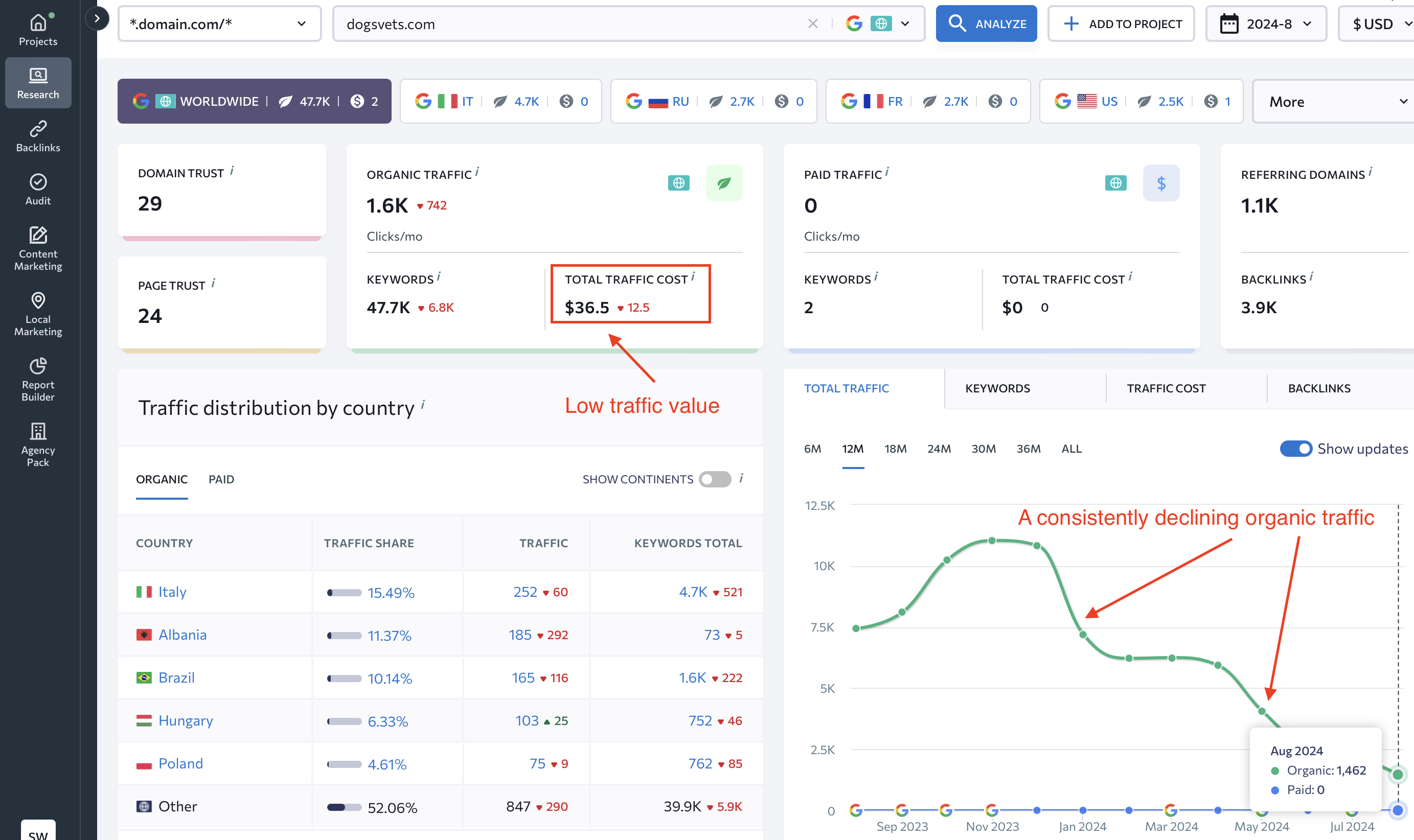
So it’s clear that high DA does not necessarily mean it’s a good site. Please watch out if your outreach partner only references this metric. They should be using this as a gauge, combined with other SEO metrics.
Step 2: Check Organic Traffic
Assessing organic traffic involves examining traffic patterns to ensure they are genuine. Look for signs of artificial inflation or consistent declines to understand the site’s credibility and reliability.
- Traffic Patterns:
- Artificial Inflation: Be cautious of sites with artificially inflated traffic. Black hat techniques include using bots to generate traffic or employing click farms. These practices can make a site seem more popular than it is and can be detrimental if these sites link back to you. For example, a site with a sudden surge in traffic from bots might seem authoritative, but its value is questionable and could harm your site’s reputation if linked.
- Consistent Declines: Traffic declines can signal potential issues like Google penalties. For instance, if a site’s traffic consistently drops after an update, it might be penalized, indicating that Google no longer sees it as authoritative. Use tools like the Wayback Machine to check for site changes that could suggest a penalty.
See our analysis on one of the sites provided to us by an outreach partner. The site was petsguide.info. It has both signals of artificial inflation and consistent declines, red flags that would require more investigation.
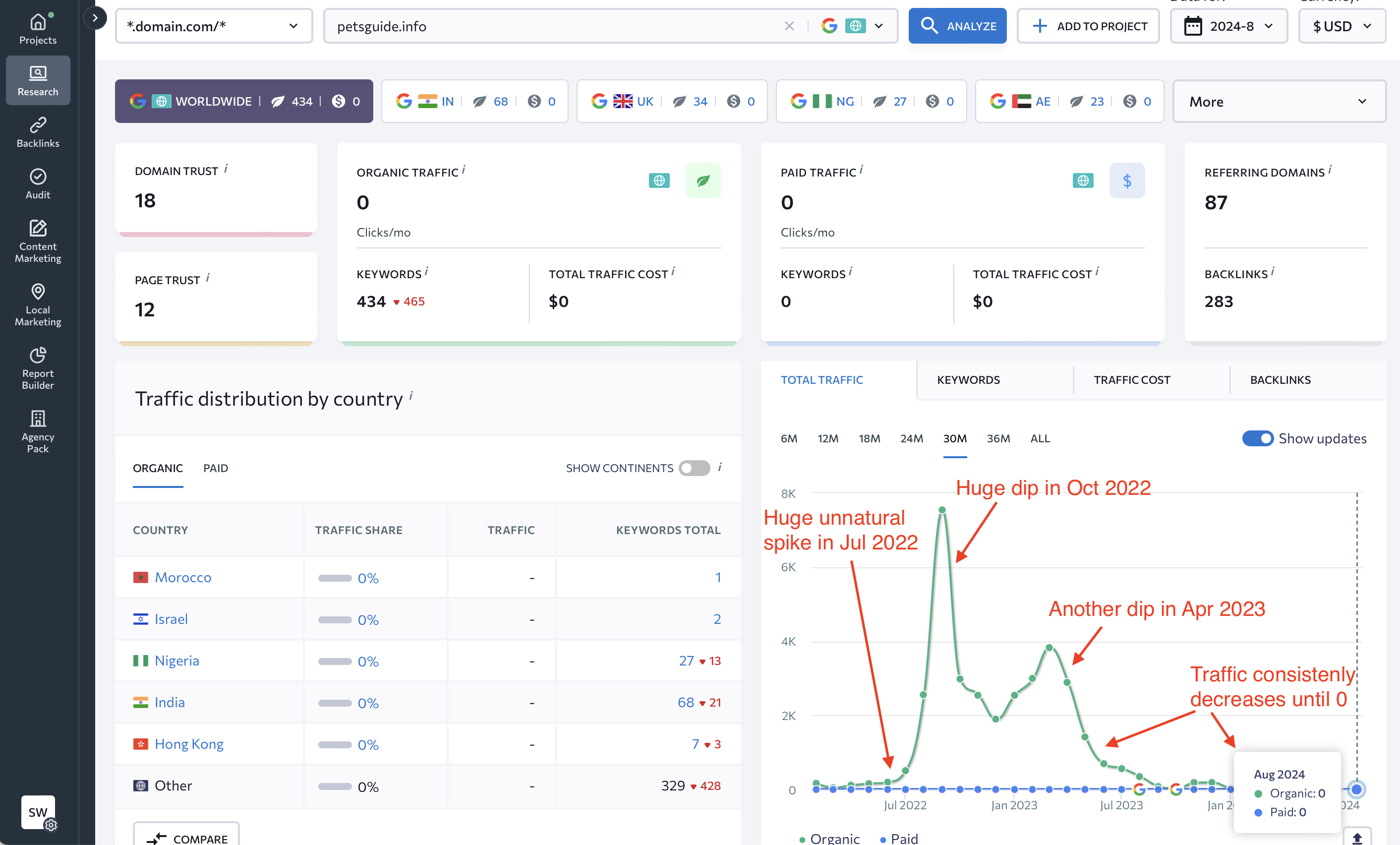
To play safe, stay clear ><! Don’t wanna get spammy backlinks that will cost you a penalty from Google.
Step 3: Check Competitiveness of Keywords and Traffic Cost
The competitiveness of keywords and traffic cost should be evaluated to understand how valuable and competitive the site’s keywords are. This assessment helps determine the site’s authority based on the cost of acquiring its organic traffic.
- Traffic Cost: Traffic Cost estimates the amount a site would spend on paid ads to get the same amount of traffic it receives organically. Higher traffic costs indicate that the site ranks for valuable and competitive keywords. For example, ranking for high-cost keywords like “premium dog training courses” suggests that the site is authoritative and has significant value. This metric reflects how much it would cost to achieve the same visibility through paid means.
- Keyword Competitiveness: Sites ranking for high-cost keywords generally have stronger authority. The higher the competition for a keyword, the more valuable and authoritative the site is likely to be. This is because competitive keywords are sought after by many advertisers, showing that the site ranks well for important terms.
Still using petsguide.com as an example, checkout their traffic profile
- Their traffic value is at $0
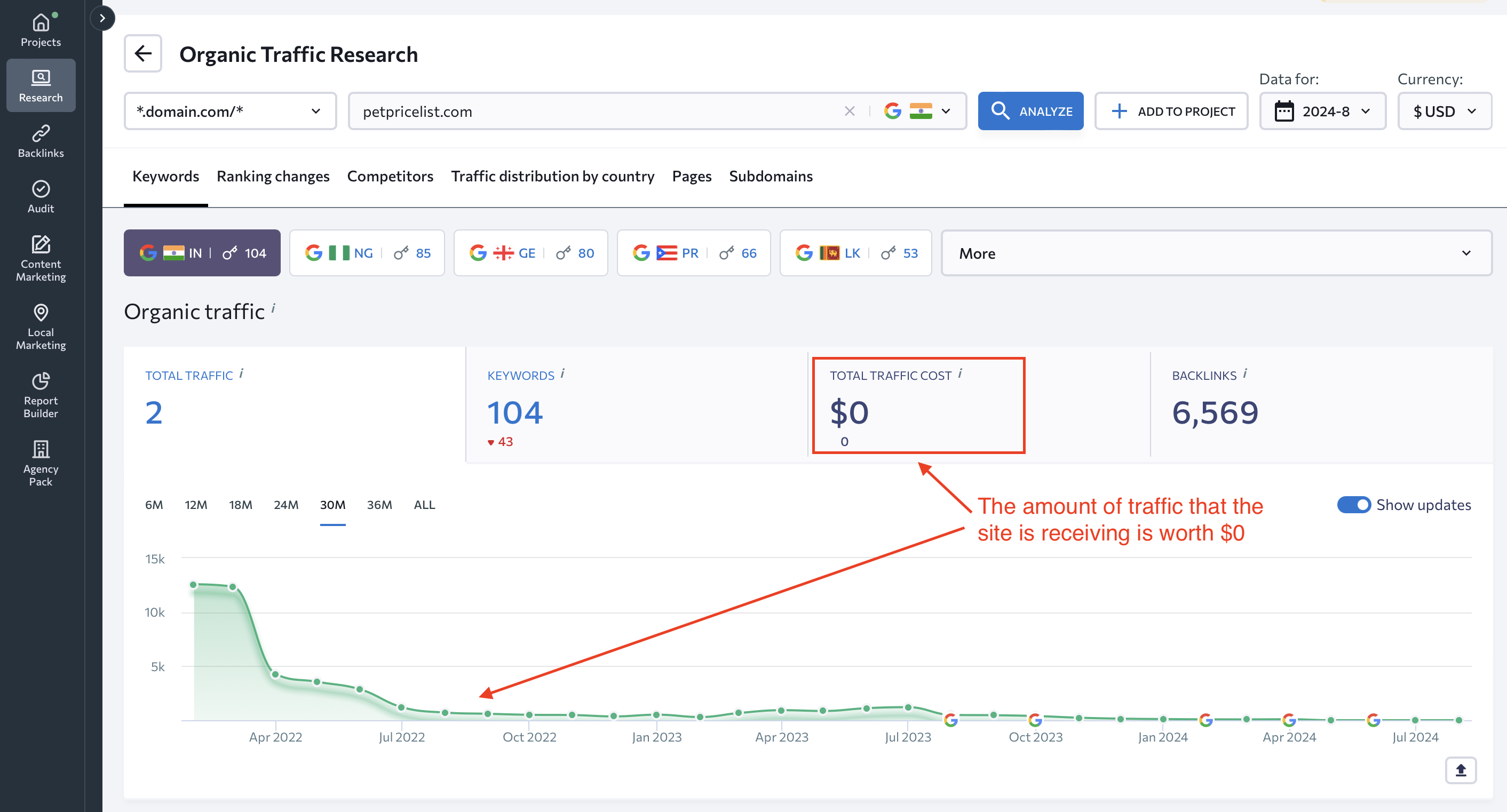
- They are ranking for no competitive keywords at all
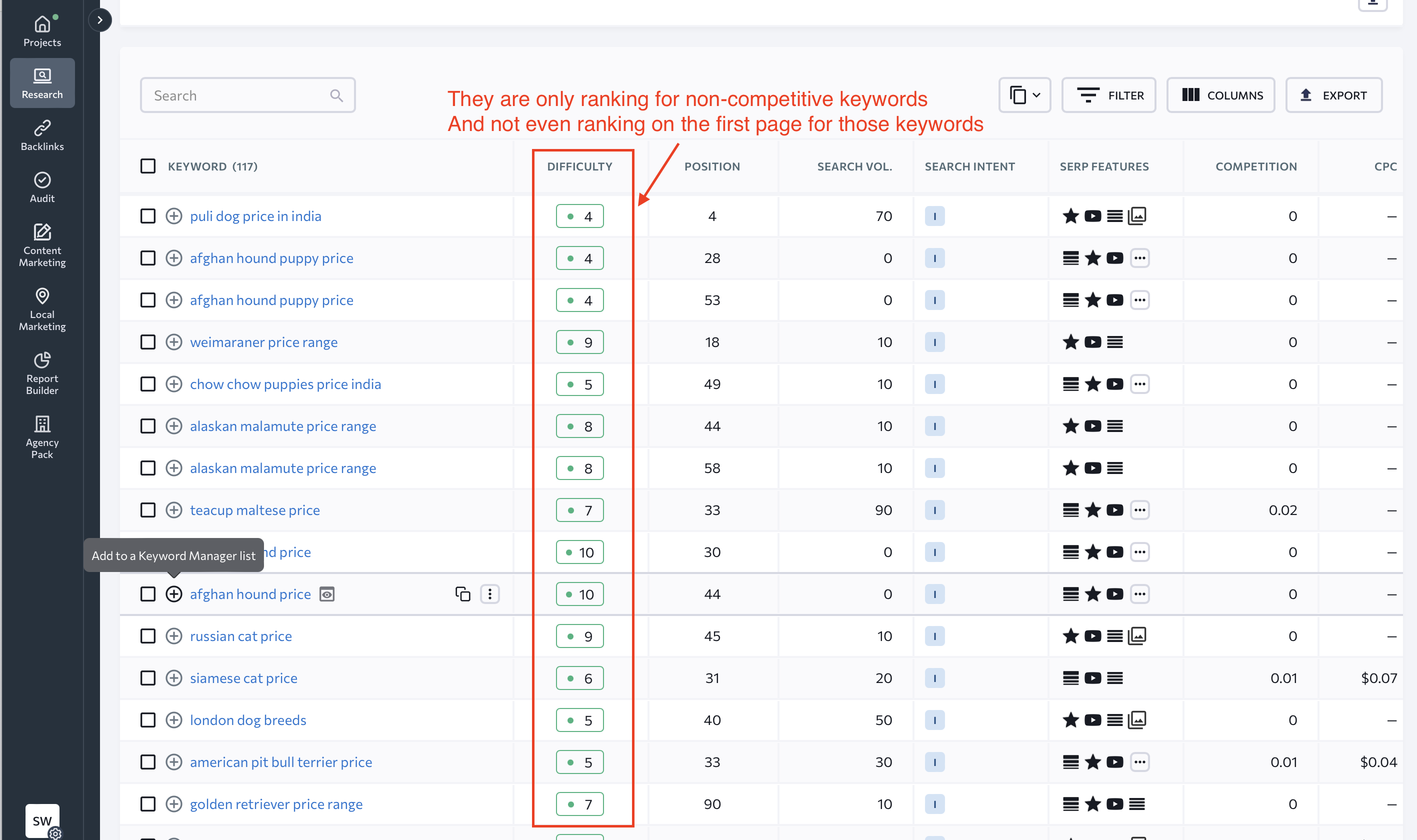
This analysis, in my opinion, is the clearest indication that the site is not authoritative in the eyes of Google. If the site is not authoritative, then it’s a weak backlink.
Step 4: Check Whether They Are Ranking on the First Page for Most Keywords
Evaluating the site’s ability to rank on the first page for many keywords is crucial. This indicates its authority and relevance in its niche, reflecting its credibility in Google’s eyes.
- First-Page Rankings: Sites that rank on the first page for many keywords are typically seen as more authoritative by Google. For instance, a site that appears on the first page for multiple relevant terms like “effective dog training methods” is likely to be considered a trusted source by Google, enhancing its value as a backlink source.
These guys also only have 4 keywords ranking on the first page. And none of the keywords are ranking in first position: 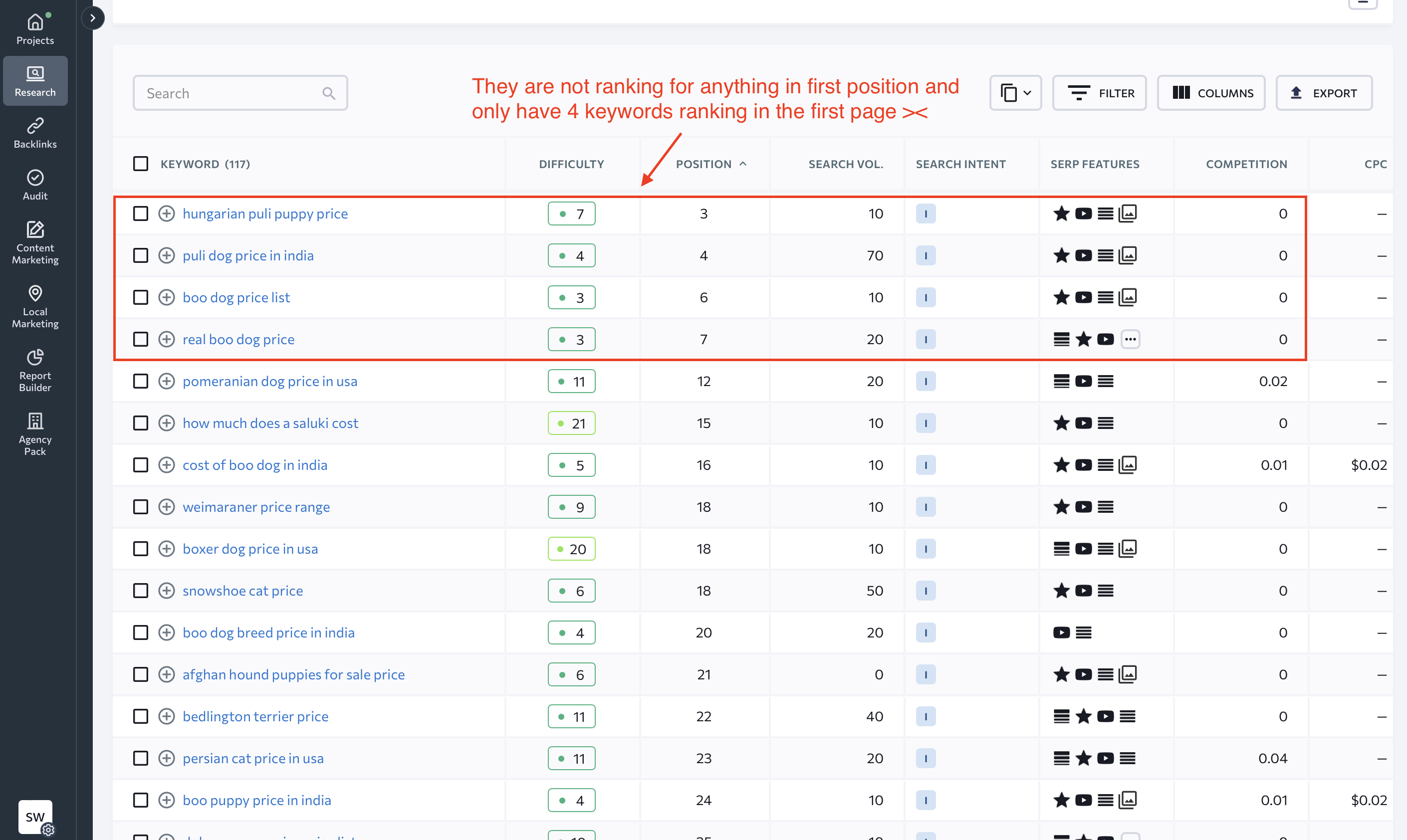
This is another clear indication that the site is not authoritative in the eyes of Google. Remember, only what Google thinks matters! The rest of the metrics are just guidelines. If Google thinks it’s shit - then the backlink will be weak.
Step 5: Check Whether the Site is Listed in Google
Confirming whether the site is listed in Google’s index is essential to ensure it’s a legitimate and effective backlink source. An indexed site is more likely to provide valuable backlinks and enhance your site’s SEO.
- Google Listing: Ensure the site is indexed by Google. A site that isn’t listed won’t provide valuable backlinks. Perform a search using
site:<baseurl>/<path>to check if the site is listed. An example of a listed site might be a well-established dog training blog, whereas an unlisted site could be one with technical issues or poor SEO practices.
At least these guys are indexed by google. 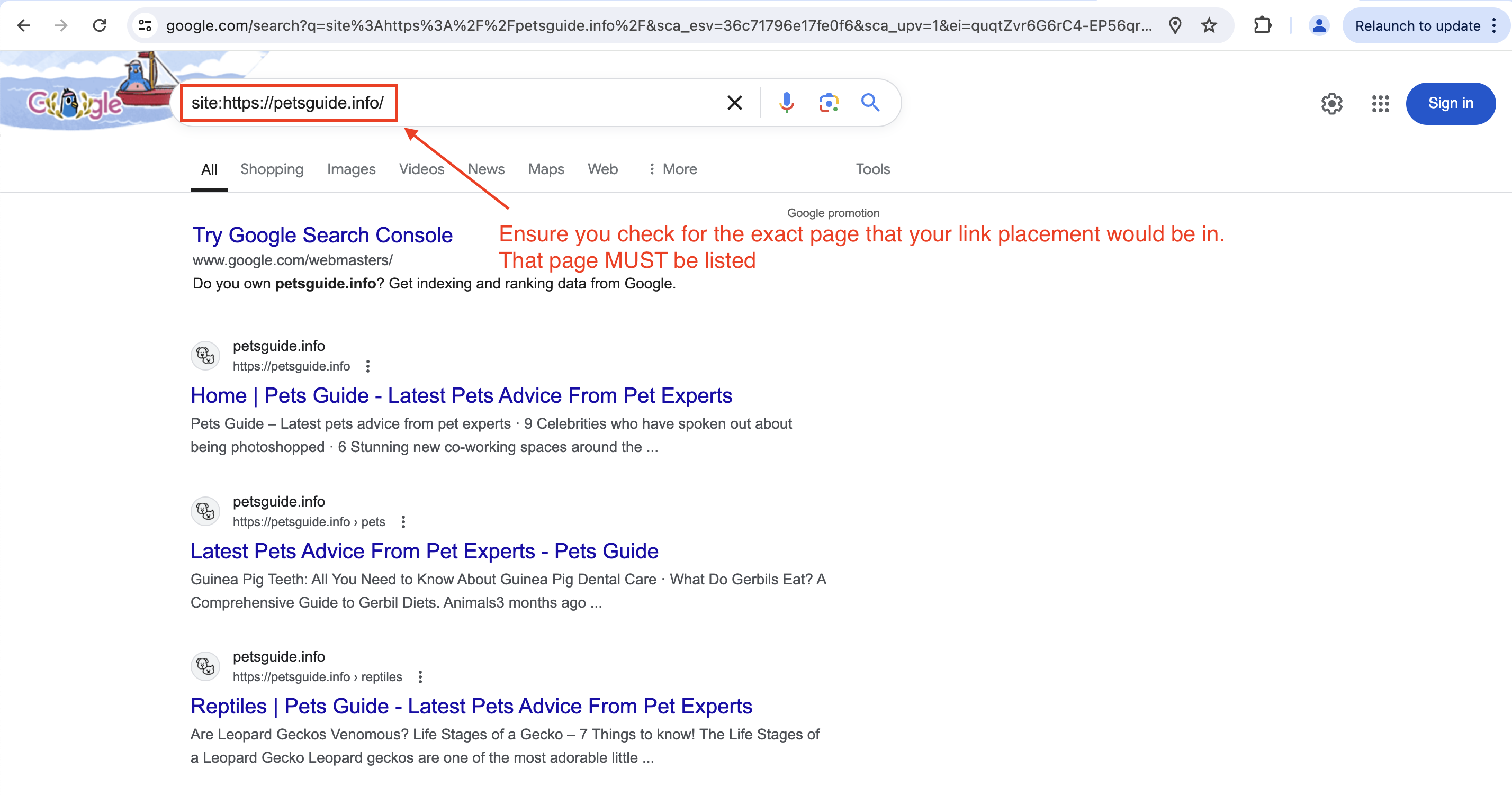
But don’t let your guard down. Please ensure that the exact page where your link placement would be in, is indexed (else, the backlink wouldn’t be recognized by google).
Step 6: Check the Site Itself
The overall quality of the site should be evaluated by examining several factors:
Good Example
- Quality of Articles: Examine if the articles are well-written, contextual, and free from random links. High-quality articles should be relevant, well-researched, and link out to authoritative sources. If desired, you can use an SEO tool to review the site’s backlink profile, such as SE Ranking’s Backlink Checker. Quality content reflects well on the site and makes it a reputable source for backlinks.
- Design and Authenticity: Evaluate the About Us page and social media presence. A professional design and active social media profiles indicate that the site is legitimate. In Google’s eyes, a well-designed site with active social profiles signals credibility, which can enhance the authority of your backlinks.
For example, animalgator.com has clear indication on their target audience and author:
- Clear Target Audience
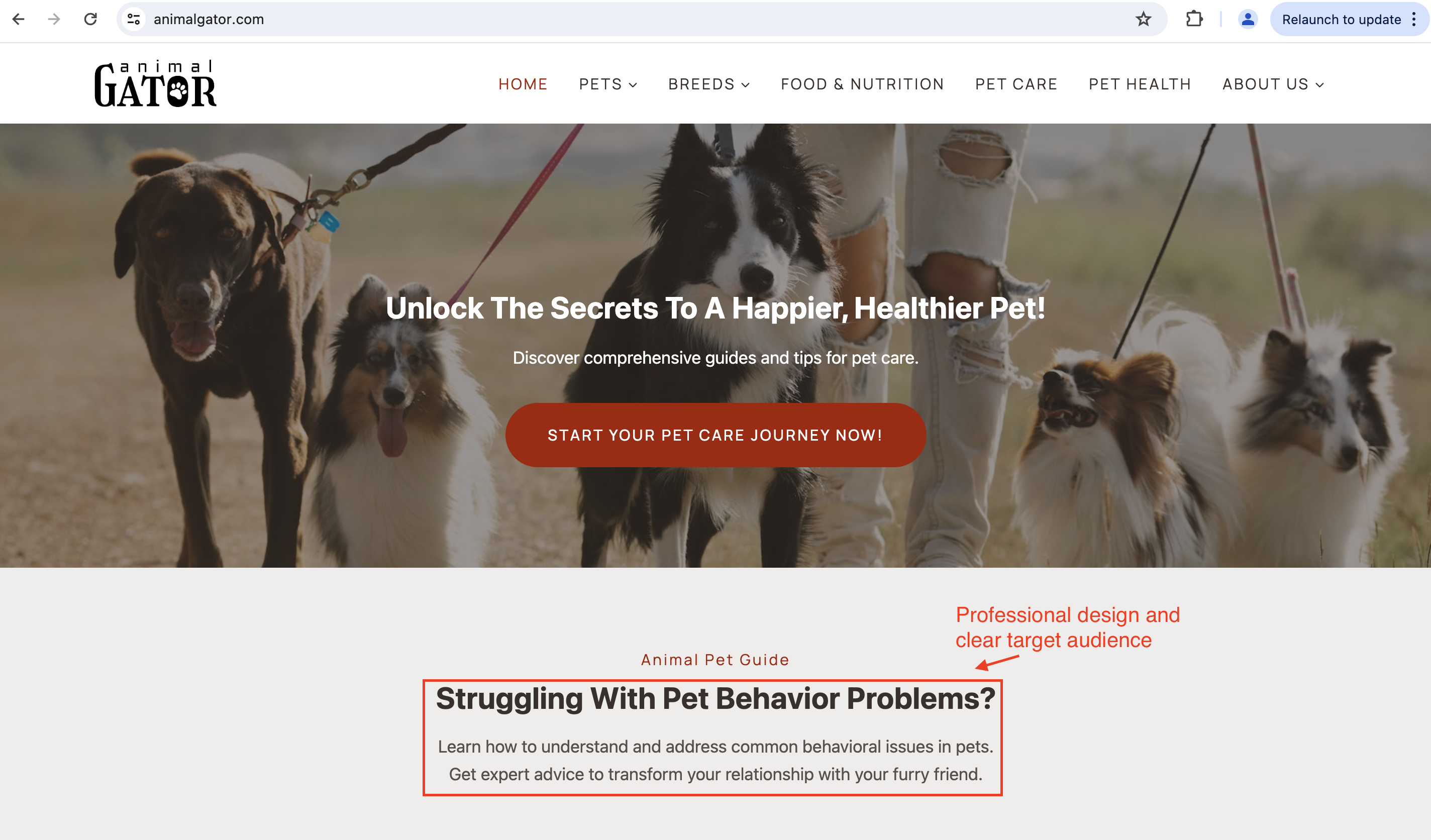
- Clear Author
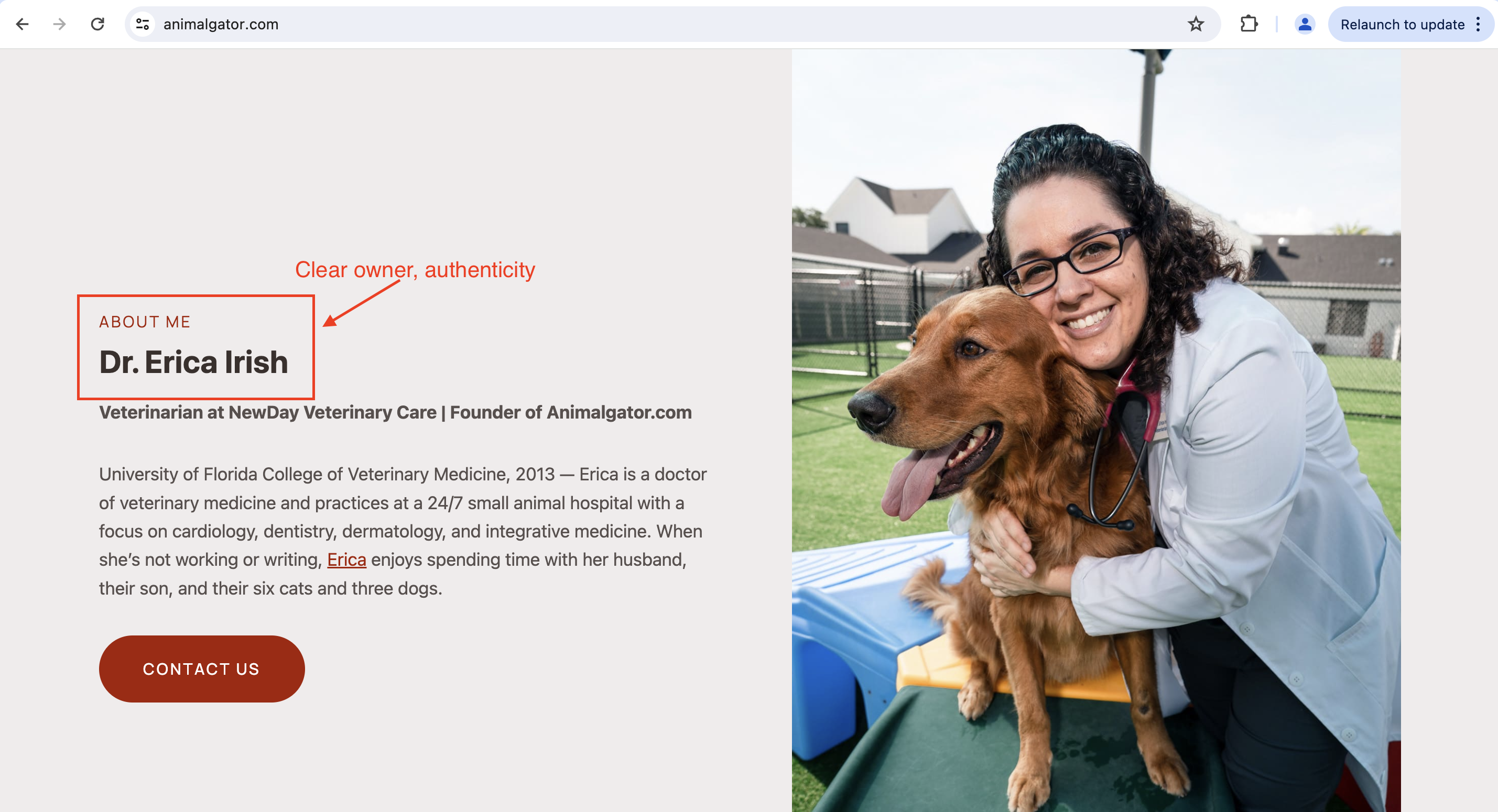
The quality of their articles are also high:
- Optimised image alt text and clear table of content
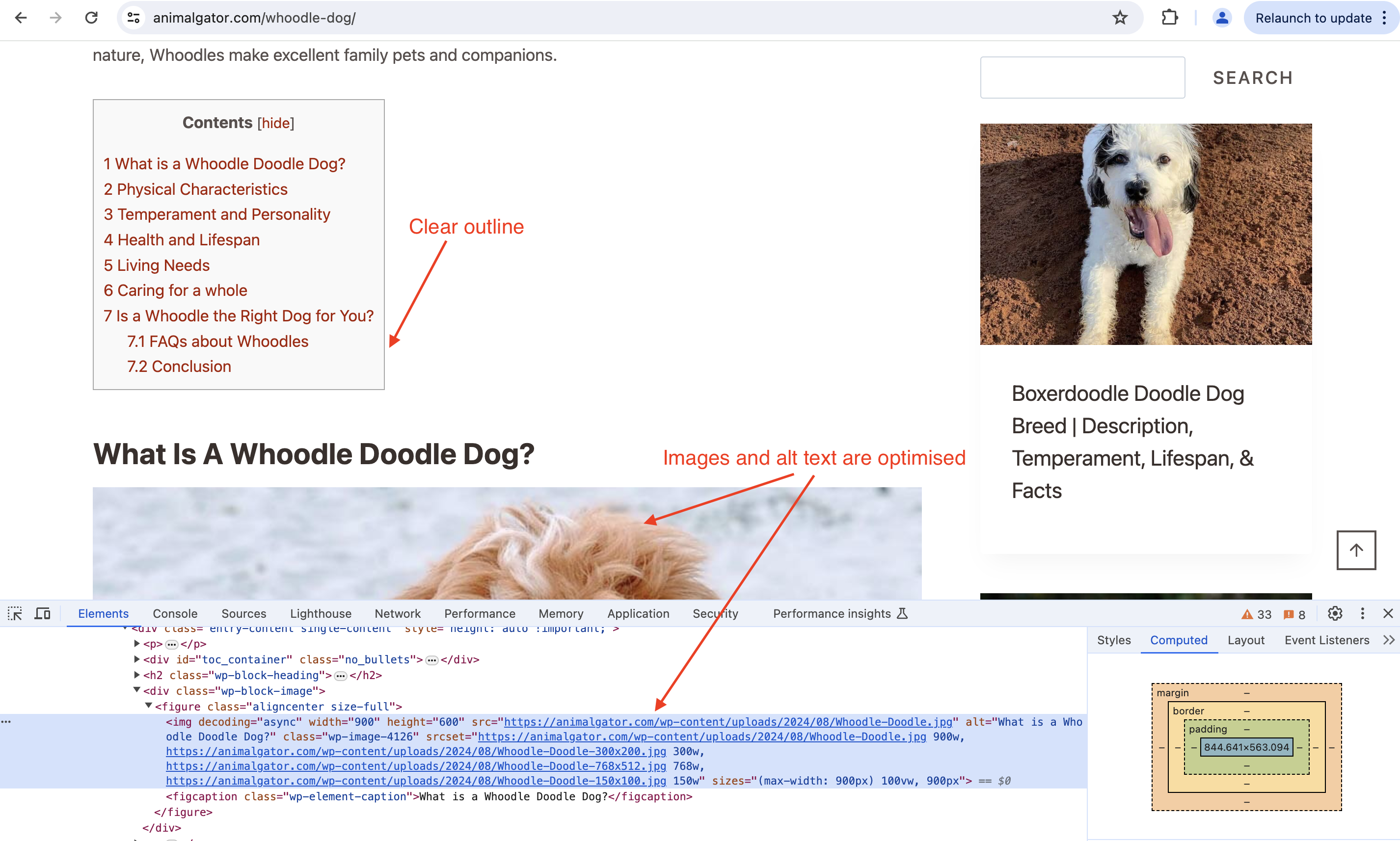
- Meaningful links neatly interwoven into the article
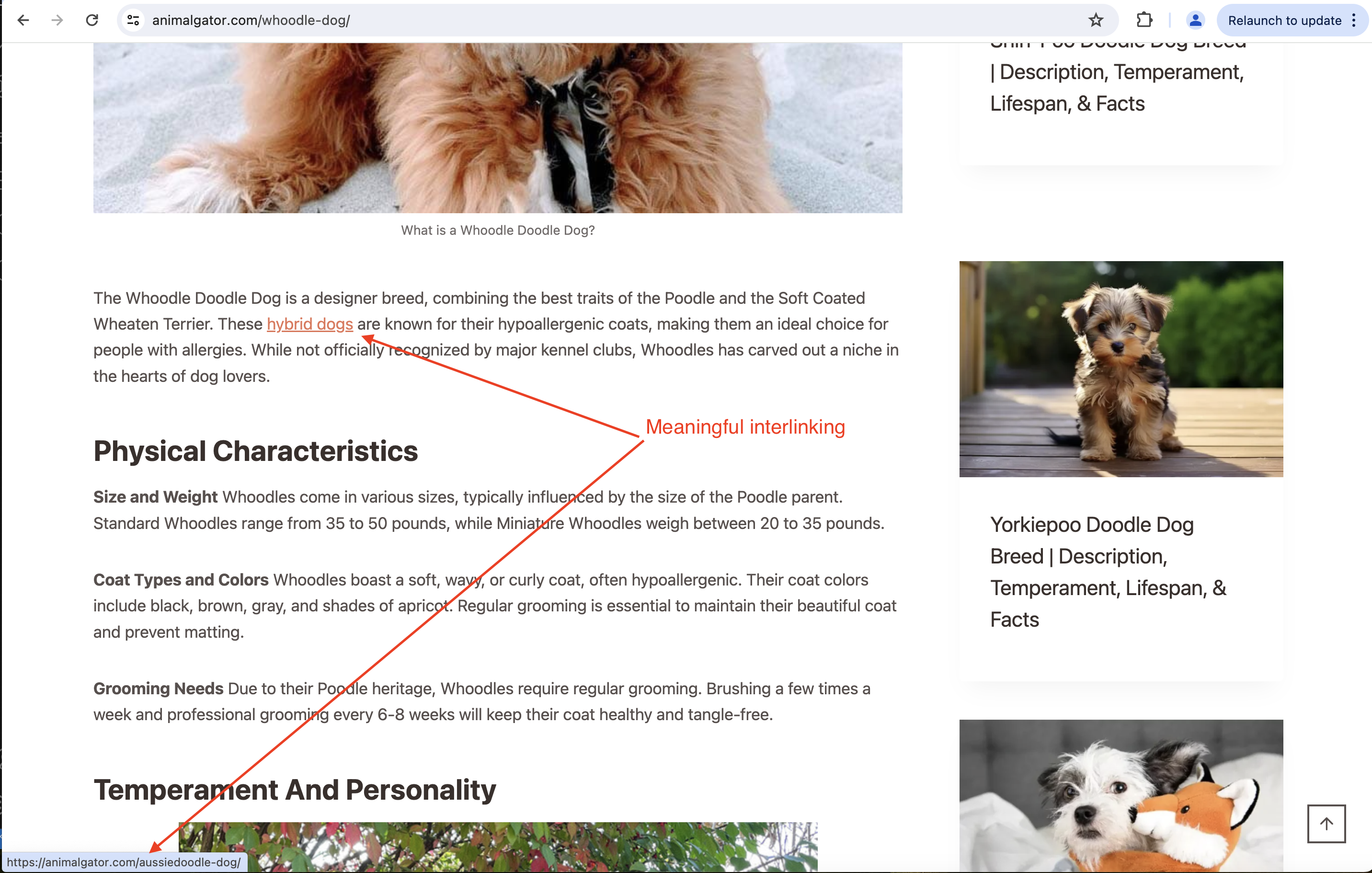
These are clear indications that animalgator.com has the audience in mind when generating the articles. If there are any doubts, we can also research the background of the author to understand their expertise and authority ^^. Green light!
Bad Example
- Quality of Articles: Poor-quality articles often have little relevance, are poorly written, and may include random or low-quality links. Such content can signal that the site is not a reliable source and can negatively impact your site’s reputation if linked.
- Design and Authenticity: A poorly designed site with a generic About Us page and no social media presence can suggest a lack of legitimacy. Such sites may have less authority and could harm your site’s credibility if they link back to you.
Compare the previous example to petsguide.com:
- Author is unclear
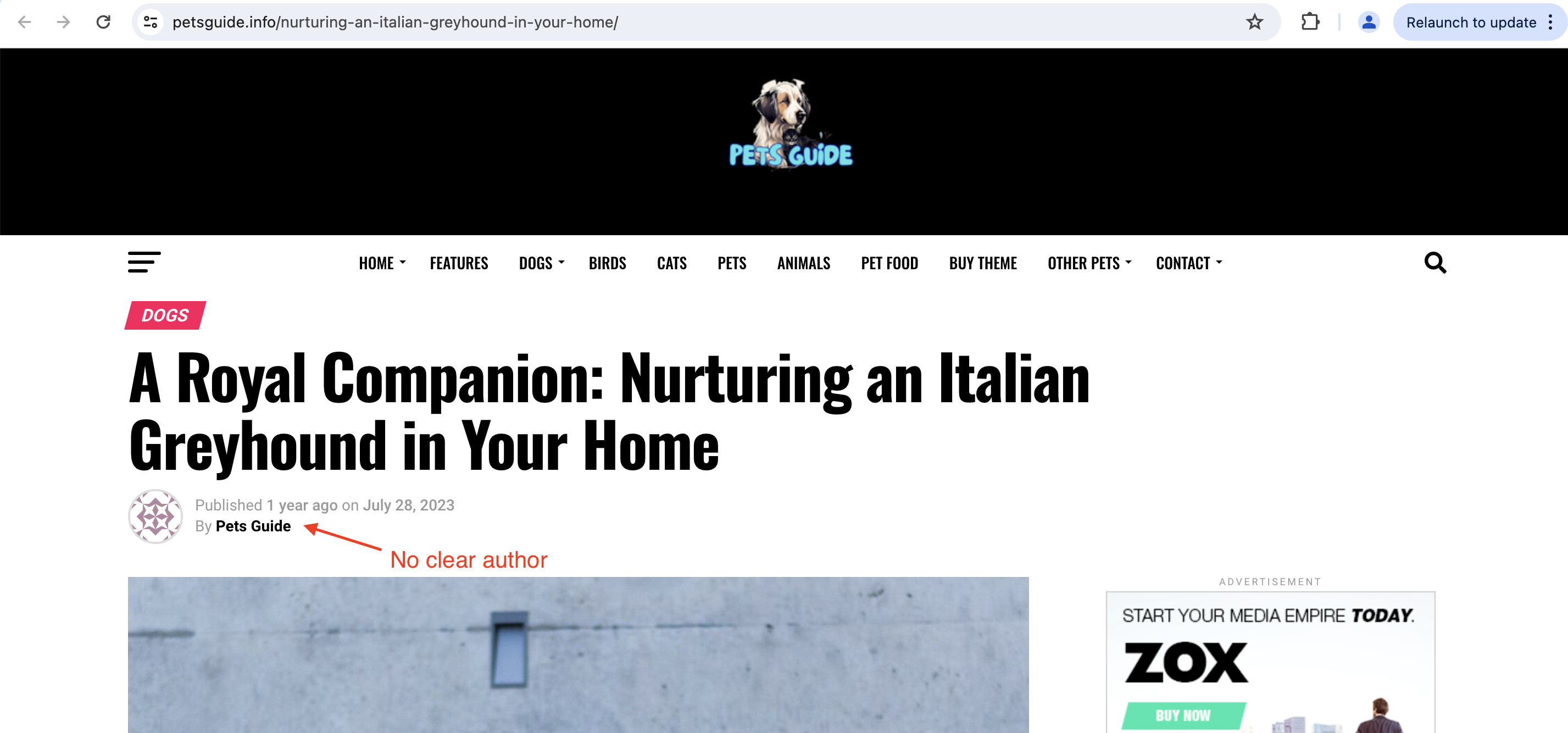
- Social media icons leads nowhere. Suggests that the site uses a plug and play template without much thought
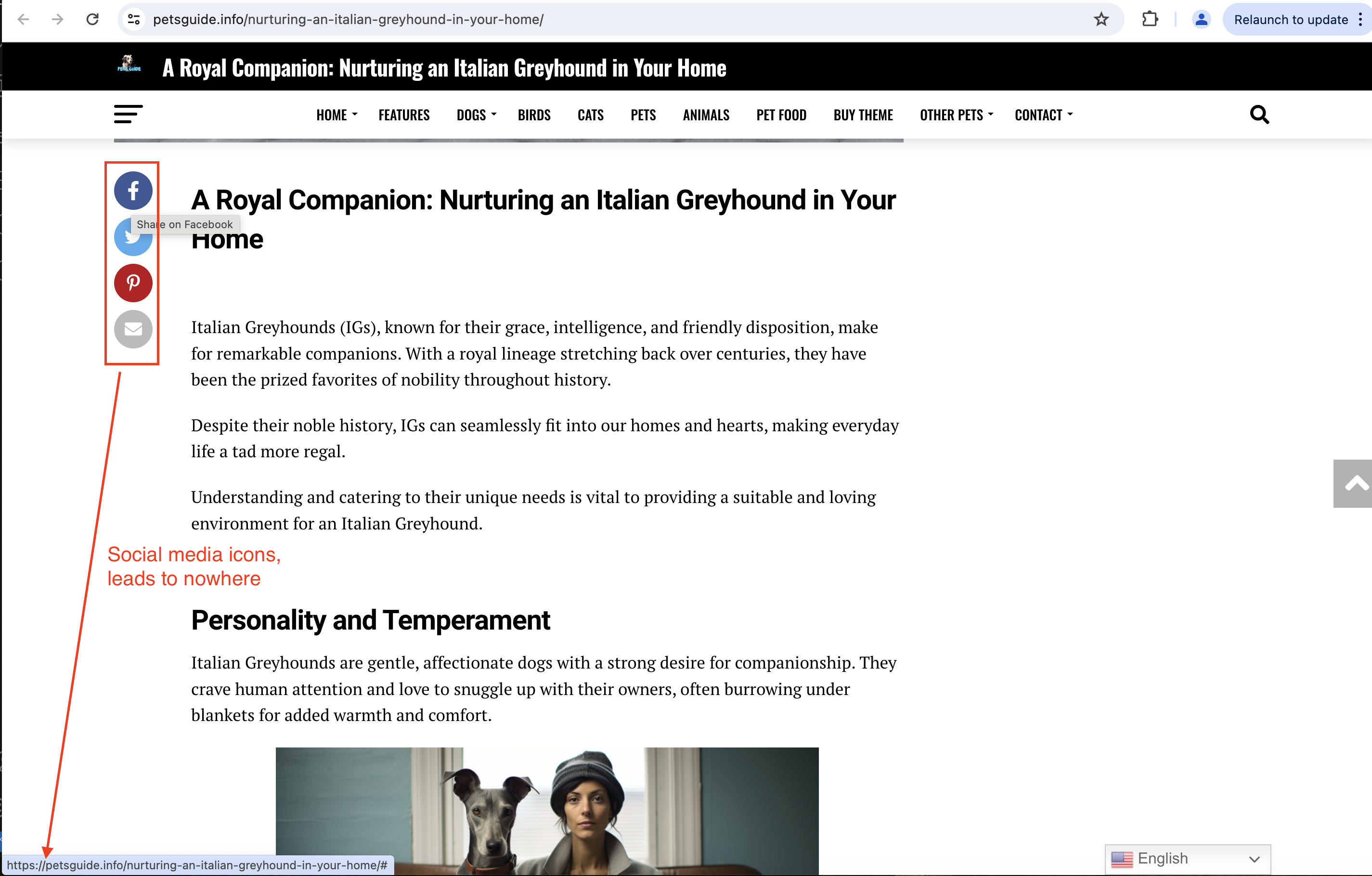
- Interlinking is also done for backlinking purposes, without much thought
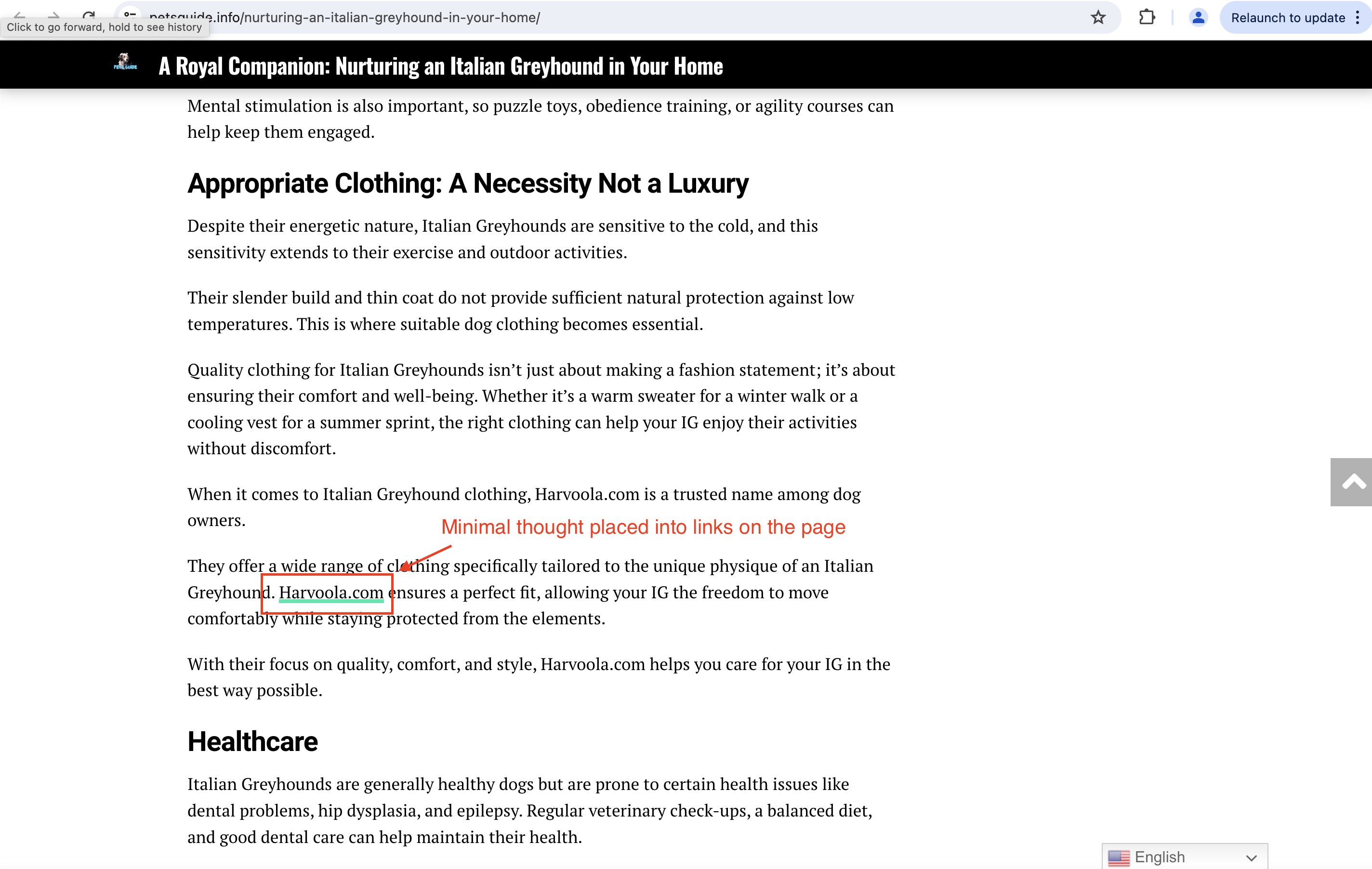
These are clear red flags that petsguide.com is either a PBN (Private Blog Network) or a link farm. I’ll stay clear of these – simply because spammy backlinks can hurt my SEO, and if we’re paying money, we want it to benefit us and not harm us -.-
Conclusion
When deciding to engage a backlink service provider, either
- Engage premium service providers. These will ensure that you get quality links
- Or aggressively vet, and pre-approve backlink sites when engaging freelancers
FAQ
Do Link Farms and PBNs No Longer Work?
Experience and Theory: Based on my experience, link farms and PBNs generally do not perform well due to their low quality. However, theoretically, a high-quality PBN could work if it invests in creating valuable, high-quality content. Most PBNs fail because they don’t invest the time and effort required to produce quality content, which limits their effectiveness. A high-quality PBN should focus on providing valuable and relevant content, but such PBNs are rare and difficult to find.
Should We Never Trust Freelance Outreach Experts?
Freelancer Effectiveness: Freelancers can be a valuable resource, but their work must be thoroughly vetted. Engaging freelancers requires careful evaluation of their proposals and the quality of their sites. Poor-quality backlinks from freelancers can negatively impact your site’s rankings, while high-quality links can enhance your site’s authority. For example, we’ve had positive experiences with freelancers who met our checklist criteria, but we’ve also had to reject poor-quality sites. If you’re not confident in evaluating link quality, using reputable companies might be a safer option.
Should I Be Worried About Google Penalties?
Understanding Penalties: Google penalties can severely impact your site’s rankings and traffic. For instance, if a site engages in spammy link practices or low-quality backlinks, it might be penalized, resulting in a drop in search rankings. This can be observed as a sudden traffic decline or a drop in search visibility. Using established companies reduces the risk of penalties, but if you’re comfortable with thorough vetting, freelancers can be a cost-effective option.
Why Not Just Focus on High DA, DR?
Limitations of DA/DR: DA and DR are useful metrics but should not be the only focus. These metrics provide a general gauge of a site’s authority but can be manipulated. Google’s authority is the ultimate goal, and DA/DR should be part of a broader strategy. Relying solely on these metrics can be misleading. For more details, refer to Backlinko’s article.
Peace and Love
Shafik Walakaka